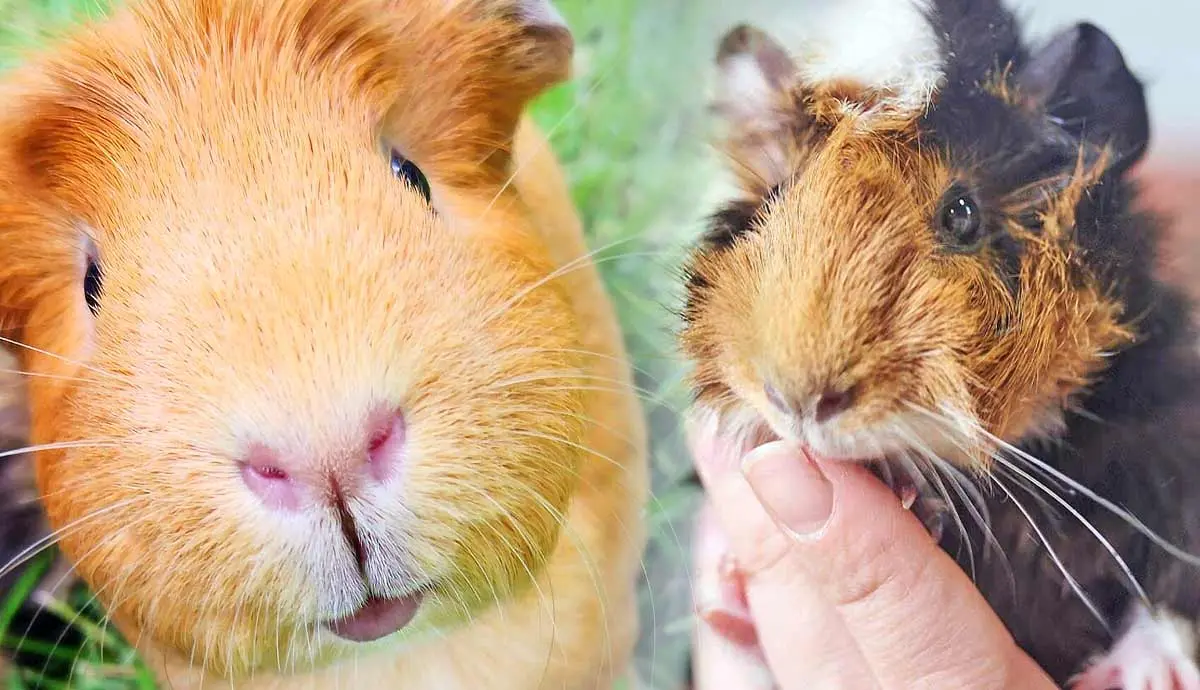”Guinea pig” is a strange name for this species of large rodent that belongs to the Caviidae family. It has a thick body and short legs and doesn’t look anything like a pig. What’s more, they don’t come from Guinea in West Africa. Instead, they originate from the Andes Mountain range in South America.
So, why are they called guinea pigs? To answer that question, we need to understand the history of guinea pigs and their domestication.
History of the Guinea Pig
Guinea pigs as we know them today do not live in the wild. They are a completely domesticated species that is related to the Andean montane guinea pigs in Peru, Bolivia, Argentina, and Chile.
Researchers believe people first domesticated these animals in Peru as humans transitioned from a nomadic lifestyle to an agricultural one. This historic transition would have taken place around 5,000 BC. These early versions of the guinea pig would have been larger than today’s rodents with diverse coloring.
Originally, these animals were a staple food, so their larger size and ability to produce large litter was necessary.
Guinea Pigs Had Many Purposes
Centuries ago, people also used guinea pig feces as fertilizer and their bones as dog food. The Incas picked up the practice of raising guinea pigs and even used them in ritual sacrifices. Many jars have been found with sacrificed guinea pig remains. The Incans began creating exotic varieties of guinea pigs that look like the ones today.
When the Spanish conquistadors invaded and European trade with South America began, people exported guinea pigs to Europe as pets for wealthy aristocrats.
Today, the Andean people still breed the cuy, their local name. They also give a mating pair as a gift to newlyweds. Many South Americans eat cuy as a delicacy. They also use them in their traditional medicinal practices.
Mostly, people around the world keep guinea pigs in cages as pets.
The Origin of the Name
Cavia porcellus is the scientific name of the guinea pig. Cavia refers to the rodent family that these creatures belong to, which also includes capybaras and maras. Porcellus means “piglet” in Latin.
Although we have lost the exact origin of the name to time, experts believe the “pig” part comes from the sounds these small rodents make. Others think the nomenclature came from how the Andean people served up these rodents as food, like suckling pigs.
Either way, the earliest recorded use of the name “guinea pig” was in the late 1500s.
Europeans often used the word “guinea” to refer to things from across the seas. This is likely how the rodent got its name. Some people suggested that the word guinea came from the coin of the same name, but this theory was disproved since the guinea wasn’t used as currency until the late 1600s, and cuy were already being called guinea pigs before that.
Other Names for Guinea Pigs
Guinea pig is the most popular name for this pet, but it is not the only one. As noted, in South America, Spanish-speaking locals refer to them as “cuy.” These animals are “quwi” or “jaca” in the Andean Quechua language.
Spanish-speaking countries call guinea pigs “el conejillo de Indias,” which translates to “little rabbit of the Indies.” In French, the name is very similar. Since explorers called the Americas the Indies, this is likely how the Spanish and French names originated.
Many other languages show how the rodent has been named and renamed based on how it was traded across Europe. The Germans call them meerschwinchen or “little sea pigs.” The Dutch call them Ginees biggetje (Guinean piglet.) Then, when the Dutch traded with Japan, the Japanese began calling them tenjiku-nezumi (or India rat), which is what these traders called them.
Amongst breeders and pet owners, they are also often called “cavies” because of their scientific name. Many pet owners choose guinea pigs because they are perfect for people with allergies.
Other Fun Facts About Guinea Pigs
Here are some additional facts about these amazing rodents:
- Guinea pigs have no tails. They lost their tail over the years as a means of hiding from predators.
- The word guinea pig also refers to someone who undergoes a scientific experiment. That’s because these creatures have played an important role in testing medications, cosmetics, and other products for centuries.
- The sounds these animals make communicate different things to other guinea pigs, such as the presence of food and danger. Guinea pig behaviors can tell the owner about how the guinea pig is feeling.
- They are social creatures. The ideal living situation includes a neutered male with female companions.
- Females are sows, and males are boars––just like real pigs!
- Guinea pigs can live long lives when properly cared for. Snowball, the oldest guinea pig in the world, lived to be 14 years old!
Guinea Pigs Remain Popular Pets
Guinea pigs are fascinating animals with a remarkable and long history with humans. These pets have been around for thousands of years and are dispersed all over the world. Their names may be odd, but these adorable rodents have captured the hearts of people for hundreds of years.







